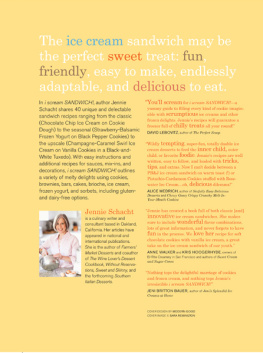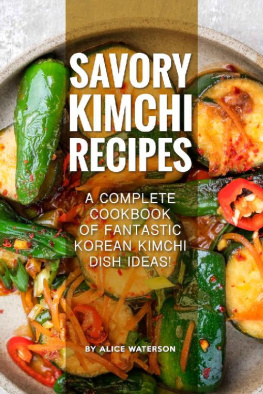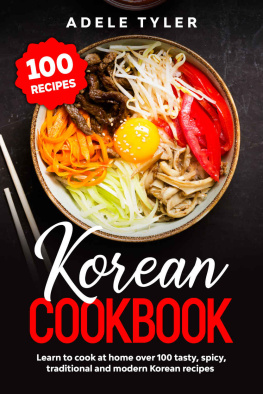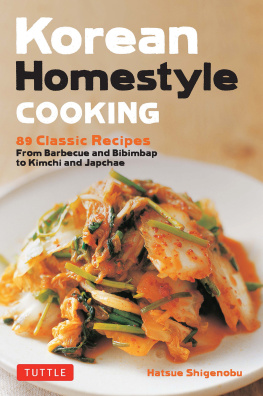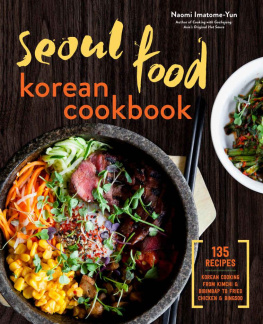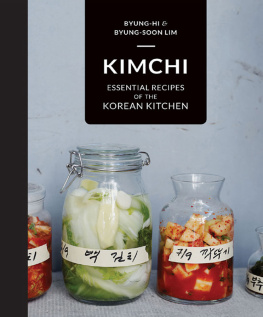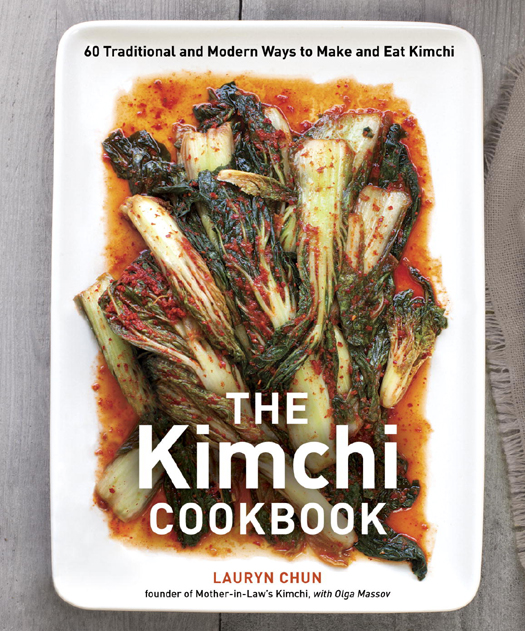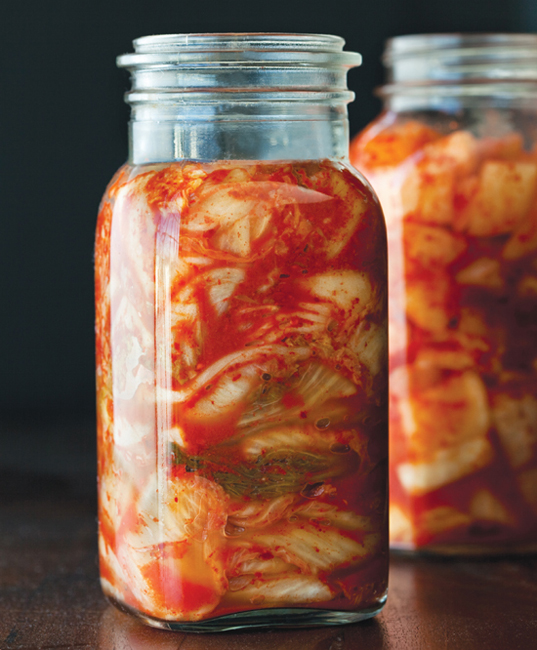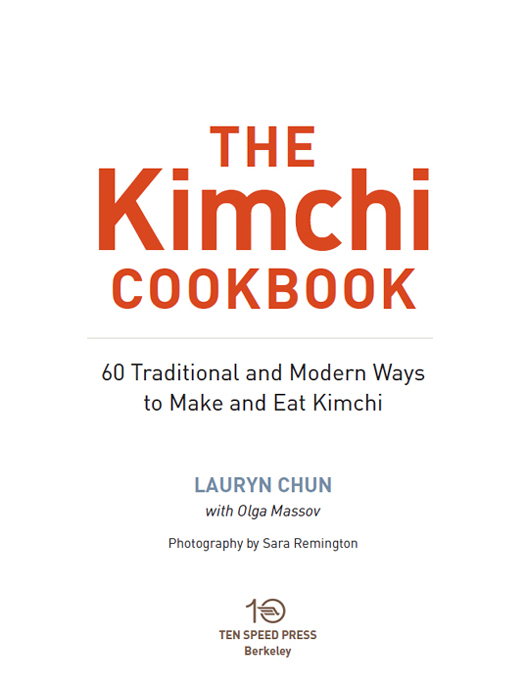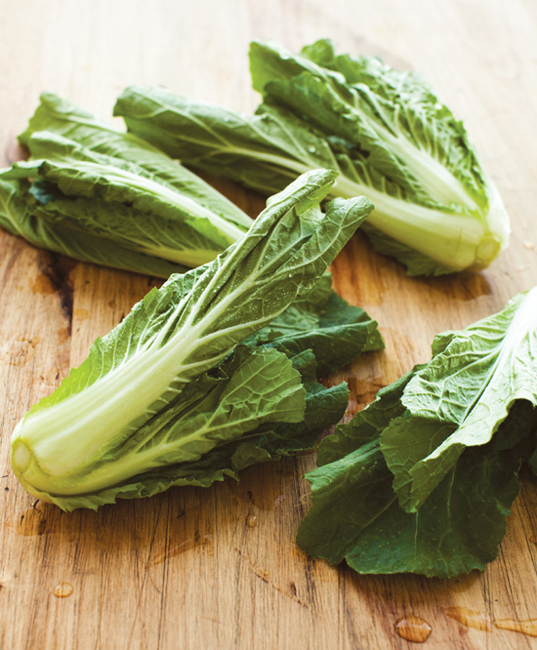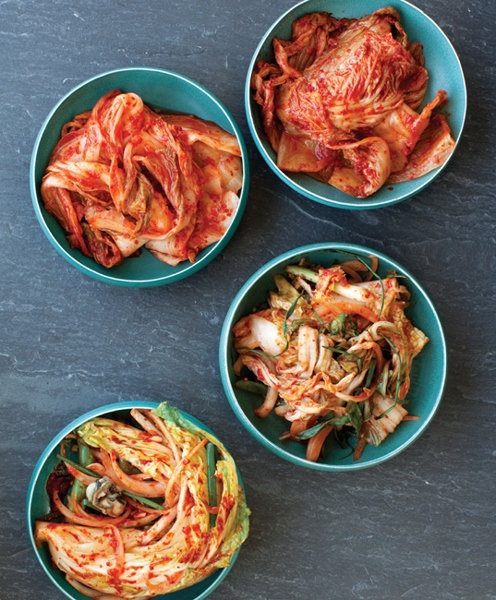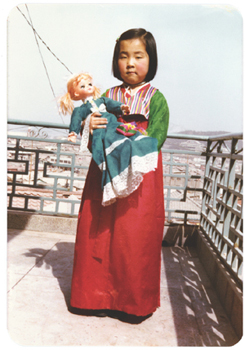Remington Sara - The kimchi cookbook : 60 traditional and modern ways to make and eat kimchi
Here you can read online Remington Sara - The kimchi cookbook : 60 traditional and modern ways to make and eat kimchi full text of the book (entire story) in english for free. Download pdf and epub, get meaning, cover and reviews about this ebook. City: Berkeley CA, year: 2012, publisher: Ten Speed Press, genre: Home and family. Description of the work, (preface) as well as reviews are available. Best literature library LitArk.com created for fans of good reading and offers a wide selection of genres:
Romance novel
Science fiction
Adventure
Detective
Science
History
Home and family
Prose
Art
Politics
Computer
Non-fiction
Religion
Business
Children
Humor
Choose a favorite category and find really read worthwhile books. Enjoy immersion in the world of imagination, feel the emotions of the characters or learn something new for yourself, make an fascinating discovery.

- Book:The kimchi cookbook : 60 traditional and modern ways to make and eat kimchi
- Author:
- Publisher:Ten Speed Press
- Genre:
- Year:2012
- City:Berkeley CA
- Rating:5 / 5
- Favourites:Add to favourites
- Your mark:
The kimchi cookbook : 60 traditional and modern ways to make and eat kimchi: summary, description and annotation
We offer to read an annotation, description, summary or preface (depends on what the author of the book "The kimchi cookbook : 60 traditional and modern ways to make and eat kimchi" wrote himself). If you haven't found the necessary information about the book — write in the comments, we will try to find it.
Abstract: A DIY cookbook for crafting and cooking with kimchi at home, building on the pungent Korean Pickles recent rise to stardom among top chefs, adventurous eaters, and connoisseurs of fermented, live-culture foods. Koreas legendary condiment is taking America by storm with its vibrant, versatile balance of flavor and just the right amount of spice. Making kimchi is the next frontier for anyone who enjoys DIY food projects, and homemade kimchi is a must-have for connoisseurs of the beloved Korean pickle. Following traditional kimchi-making seasons and focusing on produce at its peak, this bold, colorful cookbook walks you step by step through how to make both robust and lighter kimchi. Lauryn Chun explores a wide variety of flavors and techniques for creating this live-culture food, from long-fermented classic winter kimchi intended to spice up bleak months to easy-to-make summer kimchi that highlights the freshness of produce and is ready to eat in just minutes. Once you have made your own kimchi, using everything from tender and delicate young napa cabbage to stuffed cucumber, you can then use it as a star ingredient in Chuns inventive recipes for cooking with kimchi. From favorites such as Pan-Fried Kimchi Dumplings and Kimchi Fried Rice to modern dishes like Kimchi Risotto, Skirt Steak Ssam with Kimchi Puree Chimichurri, Kimchi Oven-Baked Baby Back Ribs, and even a Grilled Kimcheeze Sandwich, Chun showcases the incredible range of flavor kimchi adds to any plate. With sixty recipes and beautiful photographs that will have you hooked on kimchis unique crunch and heat, The Kimchi Cookbook takes the champagne of pickles to new heights
Remington Sara: author's other books
Who wrote The kimchi cookbook : 60 traditional and modern ways to make and eat kimchi? Find out the surname, the name of the author of the book and a list of all author's works by series.




